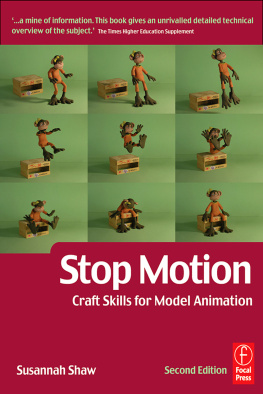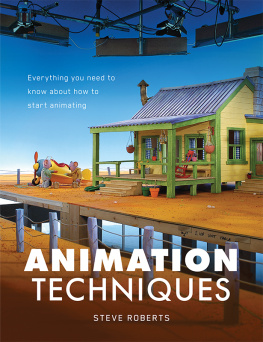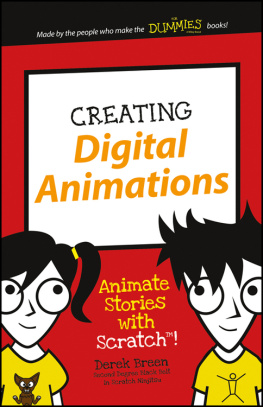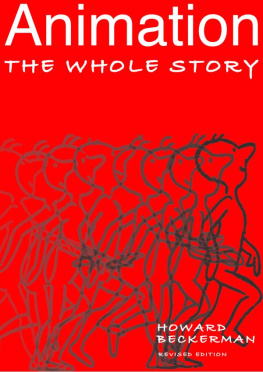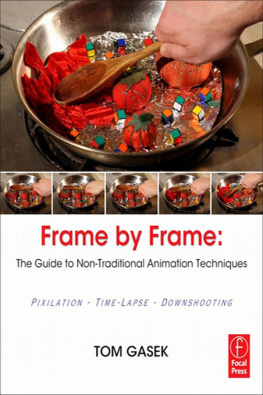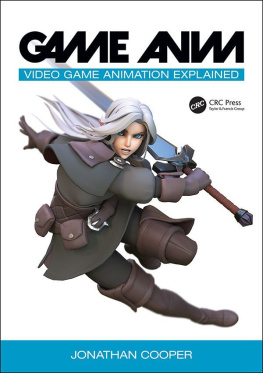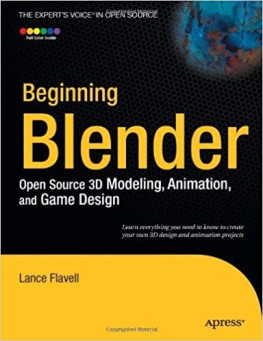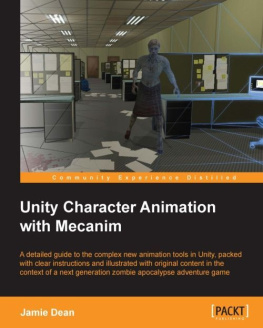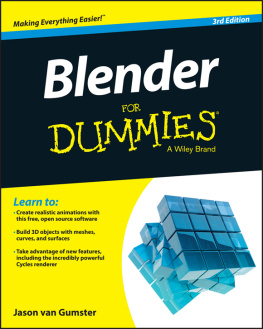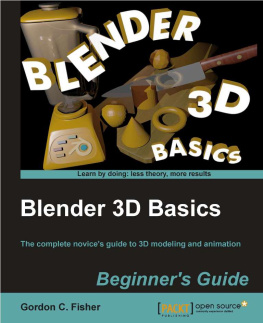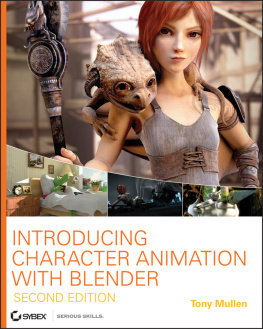Stop Motion
dedication
This book is dedicated to my mother, Francesca (19272006).
Stop Motion
Craft skills for model animation
Second edition
Susannah Shaw

Focal Press is an imprint of Elsevier
Linacre House, Jordan Hill, Oxford OX2 8DP, UK
30 Corporate Drive, Suite 400, Burlington, MA 01803, USA
First edition 2004
Reprinted 2004, 2005, 2006, 2007
Second edition 2008
Copyright 2008, Susannah Shaw. Published by Elsevier Ltd. All rights reserved
The right of Susannah Shaw to be identified as the author of this work has been asserted in accordance with the Copyright, Designs and Patents Act 1988
No part of this publication may be reproduced, stored in a retrieval system or transmitted in any form or by any means electronic, mechanical, photocopying, recording or otherwise without the prior written permission of the publisher
Permissions may be sought directly from Elsevier's Science & Technology Rights Department in Oxford, UK: phone (_44) (0) 1865 843830; fax (_44) (0) 1865 853333; email: , and selecting Obtaining permission to use Elsevier material
Notice
No responsibility is assumed by the publisher for any injury and/or damage to persons or property as a matter of products liability, negligence or otherwise, or from any use or operation of any methods, products, instructions or ideas contained in the material herein. Because of rapid advances in the medical sciences, in particular, independent verification of diagnoses and drug dosages should be made
British Library Cataloguing in Publication Data
A catalogue record for this book is available from the British Library
Library of Congress Cataloging-in-Publication Data
A catalog record for this book is available from the Library of Congress
ISBN: 978-0-240-52055-1
For information on all Focal Press publications visit our website at www.focalpress.com
Typeset by Charon Tec Ltd (A Macmillan Company), Chennai, India
www.charontec.com
Printed and bound in Canada
08 09 10 11 10 9 8 7 6 5 4 3 2 1

acknowledgements
Thanks to Gary Jackson and Cat Russ of ScaryCat Studio; Tony Guy; Ian Mackinnon, Peter Saunders and Christine Walker of Mackinnon & Saunders; Barry Purves; Jeff Newitt; Guionne Leroy; Timothy Hittle; Sara Mullock; Helen Nabarro at the BBC Animation Unit; Nick Hilligoss at ABC; Ange Palethorpe, Glen Holberton and Emma Bruce at Loose Moose; John Schofield at bolexbrothers; Blair Clark at Tippett Studios; Lionel Orozco of Stop Motion Works; David McCormick; Helen Garrard; Tristan Oliver; Bob Thorne at Artem; Anthony Scott; Trey Thomas; Richard Goleszowski; John Wright at John Wright Modelmaking; Miguel Grinberg (Magpie); Brigid Appleby and Mark Hall of Cosgrove Hall; Jackie Cockle; Sarah Ball; Barry Bruce at Vinton's; Nigel Cornford; James Mather; John Parsons; Brunsdon, Luis Cook, Nick Park, Sharron Traer, Dave Sproxton, Loyd Price, Gareth Owen, Dan Lane, Tom Barnes, Jan Sanger, Martin Shann, Ian Fleming and Michael Carter of Aardman Animations; Chris Webster at UWE; Rick Catizone; Chris Grace at S4C; Chris Hopewell and Ben Foley at Collision Films; Mary Murphy; Teresa Drilling; Johnny Tate; Tim Allen and Simon Jacobs.
Model making and animation sequences for created and animated by ScaryCat Studio
Model design, sculpt and animation sequences for (and cover) created and animated by Teresa Drilling
Model making for by Johnny Tate
Illustrations by Tony Guy and Susannah Shaw
chapter 1
introduction playing God
You want to captivate people. It doesn't come with just technique, it's about putting yourself inside that character. It's like slowing down your brain and all of a sudden you are that puppet and you move how that puppet moves.
Guionne Leroy, animator on Max & Co,
Chicken Run, Toy Story
what is stop motion?
If you want to make great animation, you need to know how to control a whole world: how to make a character, how to make that character live and be happy or sad. You need to create four walls around them, a landscape, the sun and moon a whole life for them. But it's not just playing dolls it's more like playing God. You have to get inside that puppet and first make it live, then make it perform.
Animation is animation, whatever the medium. Whether you are drawing on paper, modelling in Plasticine, shoving a couple of matchboxes around in front of a Bolex camera or animating with a computer; to become an animator you will need to understand movement and how to create emotion. You can be a cartoonist or an artist on film, a moving image maker, and there are many beautiful and hilarious examples of this, but they do not necessarily fulfil the definition of animation that this book sets out to demonstrate. This book is written for someone wanting to take the first steps in creating three-dimensional character animation.
Methods for 2D animation have been documented for a long time. Since the formation of the Disney Studios, their vast commercial output meant they had to find ways of passing on their skills to a large body of workers who needed to know the house style. The top animators started to look at what they were doing as animators, and started to identify rules and guiding principles by which they worked. Most of these principles apply to model or puppet animation as well as as they are derived from the scientific study of movement the effect of gravity, friction and force on masses. One of the greatest books to read about the development of 2D animation is Ollie Johnston and Frank Thomas's The Illusion of Life (1997).
You will have seen computer animation that seems wooden and stiff or the characters glide and swoop about as though gravity never existed. This is simply because, in this relatively new medium, the majority of early practitioners were originally from a computing background and had learned the computing skills but not necessarily the animating skills. Director John Lasseter was a successful 2D animator before applying his skills to the computer-generated Tin Toy, Knick Knack and, more famously, Toy Story and Monsters Inc., giving Pixar some of the best computer-generated characters seen so far. Not everyone can handle both skills that well. Nowadays, animators are recruited to work on computer-generated films from 2D and stop motion backgrounds, and it is recognized that training for CG character animation should follow the same traditional principles of animation.
In Europe and Asia, model animation has grown out of a tradition of storytelling, fable and legend. Most practitioners developed their own ways of working in isolation, many re-inventing the wheel, but in very few cases were methods documented, and certainly no principles for model animation had been laid down in the same way as for 2D. But the basic laws of movement apply to any form of animation.
For many years Eastern Europe was the source of puppet animation; in the USA film experimentation settled more quickly to making 2D drawn animation. But in Eastern Europe there was a long tradition of puppeteering; for some, film was seen as a natural medium for the art. Puppeteers had to be able to breathe life into a jointed wooden doll in very much the same way as animators do. The design element of the puppet was very important to the storytelling process they would need to communicate a character over a distance to the whole audience. Jiri Trnka, the Czech animator, paid homage to this tradition with his beautifully made puppet films of the 1950s and 1960s, the best known of which was an adaptation of Shakespeare's

